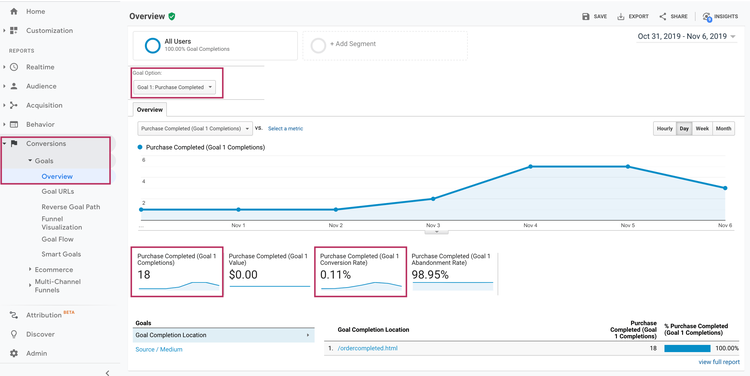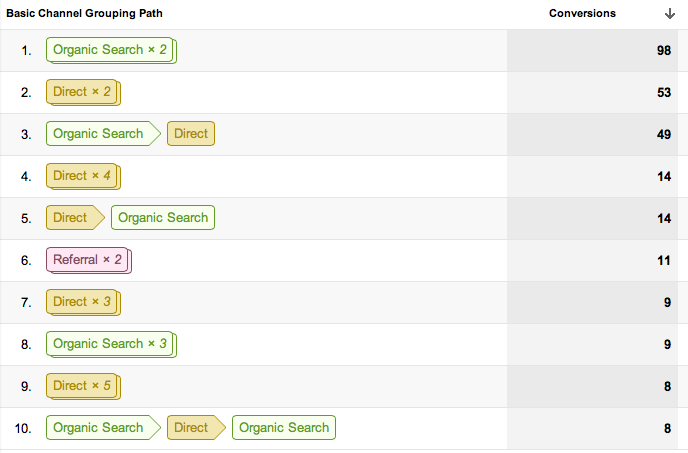Discover What Data Is Google Analytics Goals Unable to Track
Wiki Article
Unveiling the Blind Destinations: Understanding What Google Analytics Goals Can not Measure
In the world of digital analytics, Google Analytics stands as an effective tool for monitoring and assessing on the internet user communications. Understanding what Google Analytics objectives can not determine is important for gaining a thorough view of user habits and engagement.Customer Habits on External Platforms
Recognizing exactly how customers engage on external systems is essential for maximizing online approaches. External systems, such as social networks networks, referral web sites, and on-line forums, play a substantial role in driving website traffic to a company's web site. By analyzing individual actions on these platforms, organizations can acquire useful understandings into the performance of their marketing initiatives and the preferences of their target audience.One secret facet of user habits on exterior systems is the recommendation resource. By tracking where the customers are originating from, companies can identify which systems are driving one of the most traffic to their internet site. This information can assist business designate their sources better, concentrating on the platforms that produce the most effective outcomes.

Offline Conversions and Interactions
Examining individual behavior on exterior platforms provides useful insights right into on the internet strategies; nonetheless, taking into consideration offline conversions and interactions is just as crucial for a comprehensive understanding of a firm's general efficiency. Offline conversions, such as in-store purchases or phone inquiries, play a significant function in many organizations' success.
Acknowledgment Beyond Last Click
When diving right into the realm of digital advertising analytics, it comes to be necessary to look beyond the solitary touchpoint of the last click for an extra comprehensive understanding of attribution. While Google Analytics supplies useful understandings right into user behavior, relying entirely on last-click attribution can be restricting - what data is google analytics goals unable to track. Acknowledgment versions that go past the last click supply a more nuanced view of the customer journey, thinking about all the touchpoints that cause a conversionAttribution beyond the last click allows online marketers to assign credit report to numerous communications along the conversion path, giving a clearer photo of the performance of various advertising networks. By checking out multi-touch attribution models such as linear, time degeneration, or position-based acknowledgment, services can better allot their advertising and marketing budget plans and enhance their strategies for optimal effect.
Comprehending the influence of click reference each touchpoint in the conversion procedure is crucial for making educated decisions and optimizing ROI. By embracing attribution beyond the last click, businesses can acquire much deeper understandings into customer behavior and customize their advertising and marketing initiatives extra efficiently.
Cross-Device and Cross-Browser Monitoring

In a similar way, cross-browser tracking matches cross-device monitoring by recording user habits as they change in between various internet internet browsers. Understanding how individuals engage with internet sites on numerous browsers can help online marketers enhance their on the internet experiences to make certain uniformity and capability throughout various systems.
Qualitative Information and Customer Intent
Recognizing user intent through qualitative data analysis is important for establishing targeted electronic marketing strategies that resonate with the needs and preferences of the target audience. Qualitative information provides understandings right into the 'why' behind customer activities, clarifying motivations, emotions, and preferences that quantitative data alone can not record. By analyzing customer responses, remarks, and interactions, online marketers can uncover valuable details concerning customer intent, permitting them to customize their messaging, material, and offerings to better align with what their target market is looking for.Qualitative data also helps what data is google analytics goals unable to track in comprehending the context in which users engage with a web site or app. This contextual understanding enables marketers to develop more personalized and pertinent experiences, inevitably driving higher involvement and conversion prices. By delving right into user intent via qualitative data evaluation, services can gain a much deeper understanding of their target audience, bring about much useful source more effective marketing methods that meet customers' demands and expectations.
Verdict
Finally, Google Analytics objectives have limitations in gauging user behavior on external systems, offline conversions, acknowledgment beyond last click, cross-browser and cross-device tracking, and qualitative data connected to individual intent. what data is google analytics goals unable to track. It is essential for businesses to be knowledgeable about these blind places in order to supplement their data evaluation with various other tools and techniques to obtain a more detailed understanding of their target market and improve their general electronic advertising and marketing techniquesBy examining customer behavior on these platforms, services can obtain valuable insights into the efficiency of their advertising and marketing efforts and the preferences of their target audience.
Evaluating individual actions on exterior systems provides important insights into on the internet methods; nonetheless, considering offline conversions and interactions is equally imperative for a comprehensive understanding of a company's general performance.In digital advertising analytics, moving beyond last-click attribution to explore cross-device and cross-browser tracking is important for acquiring an alternative understanding of individual interactions across various platforms and tools. By analyzing user responses, remarks, and communications, marketers can reveal beneficial details regarding individual intent, allowing them to tailor their messaging, web content, and offerings to much better line up with what their audience is seeking.
By diving right into individual intent through qualitative information evaluation, services can acquire a deeper understanding of their target audience, leading to more efficient advertising and marketing strategies that fulfill individuals' assumptions and needs.
Report this wiki page